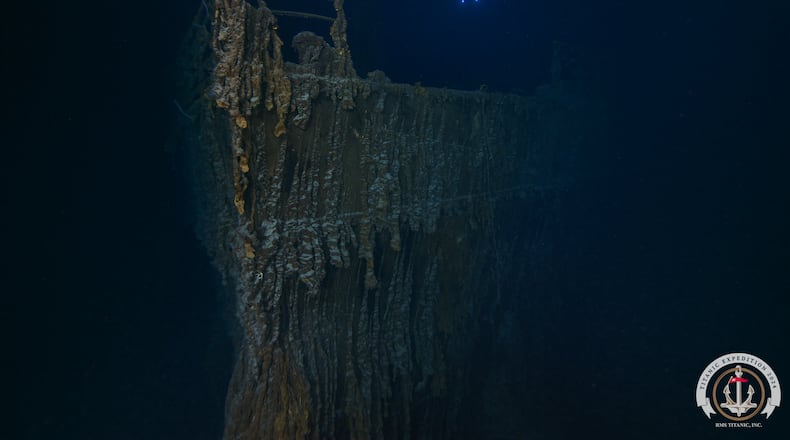Preserving and documenting iconic human-made structures can be a race against the clock, especially when the priceless artifacts are on the sea floor.
A recent expedition by Peachtree Corners-based RMS Titanic Inc., the sole legal salvager for the Titanic’s wreckage site, showcased how the elements more than two miles down can quickly erode famous landmarks. The bow of the world’s most famous ship is now missing a large section of its deck railing, according to new photographs taken during the 28-day mission in July.
“It’s a stark reminder that it is deteriorating, and it’s not going to last forever,” Tomasina Ray, director of collections for RMS Titanic Inc., told The Atlanta Journal-Constitution.
The expedition resulted in more than 2 million photographs of the wreckage site, in addition to hours of video. It was the company’s first documentation trip in roughly 14 years to the Titanic’s resting place, which lies about 12,500 feet underwater in the Atlantic Ocean.
The Titanic, the world’s largest ship at the time, struck an iceberg and sank in 1912, killing all but about 700 of the roughly 2,200 passengers and crew. Ray said her company partnered with France in 1987 to visit the ship’s wreckage site, which gave RMS Titanic Inc. sole rights to recover the site’s artifacts.
Credit: Courtesy RMS Titanic Inc.
Credit: Courtesy RMS Titanic Inc.
This year’s expedition rediscovered a bronze statue of the Roman goddess Diana that served as the first class lounge’s centerpiece — a piece that was feared to have been illegally salvaged since it hadn’t been seen since the 1980s. Ray said they found the 2-foot-tall statue on the last day of the mission.
“We got really lucky on the last day of the expedition,” she said. “And to find her sitting there, looking face up exactly as she had been in the first image and looking brand new, it was so heartening to see.”
The lounge was ripped open during the Titanic’s sinking, which left the statue among a debris field outside the ship’s hull. Ray said artifacts sitting on the sea floor are more exposed to erosion and the elements, presenting less time for research and salvage before those items are lost to history.
The July mission comprised 52 people on a boat, including at least a dozen remotely operated vehicle pilots. The underwater robots called ROVs that scoured the wreckage site were unoccupied, unlike last year’s Titan voyage to the Titanic’s wreckage that ended in tragedy when the submersible imploded and killed its five passengers. Among the victims was Paul-Henri Nargeolet, a former French navy officer known as “Mr. Titanic” who worked closely with RMS Titanic Inc. since its maiden 1987 mission.
The materials documented and recovered by the company can’t be sold but will make their way into public exhibits operated by its entertainment arm, Experiential Media Group. The company operates permanent Titanic exhibitions in Orlando and Las Vegas alongside temporary exhibits.
Ray said it will take months to review the images and video from the latest mission, which could spur artifact recovery expeditions at undetermined times in the future. While the underwater missions are expensive and difficult, she said it’s the only way to preserve the Titanic’s legacy before the ship inevitably deteriorates.
“The steel of the hull and the entire structure is weakening as it is being eaten by the microbes, so it’s only a matter of time before the ship continues to pancake,” she said. “… Those stories are disappearing rapidly.”
Ray said she expects the company’s next mission will not come with a 14-year gap.
About the Author
Keep Reading
The Latest
Featured



